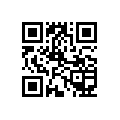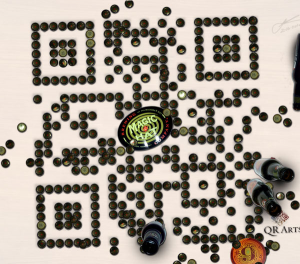This posting is the second in my Creative Thinking Series and follows “Sane People with Insane Ideas: Creative Thinking I”. In the first post, I discussed having the courage to allow yourself to think creatively. Thinking creatively requires you to imagine an alternative path; a third path besides the two Frost wrote about diverging in a yellow wood. Its not about the road less traveled by, its about the road not even conceptualized yet. The road Frost didn’t even think about. Choosing either of Frost’s paths just lead to ordinary ends. To be extraordinary you must create your own path. In this post you will read about the importance of creative problem solving and its implications.
Being creative takes practice. In fact you should practice creativity regularly. Pick something you like to do and do it daily. If you like writing, write daily. If you like painting, paint daily. Play a video game that allows you to create something from scratch. You use it or lose it. One of the most “interesting” blogs I read, Altucher Confidential by James Altucher as recently compiled some advice on this front. Check out his “Nine Ways To Light Your Creativity ON FIRE.”
Its very important to have this tool ready to innovate or create when needed. I say “needed” because life doesn’t throw you softballs for you to just stand around and blast out of the park. Life throws curve balls and damn good major-league-type curve balls at that. When you don’t get curve balls, you get 95 mph fastballs. You have to have the ability to develop creative solutions at a moments notice. Your ability to innovate will be the most important tool in your arsenal to solve your life’s problems and business problems.
Creativity is prevalent in successful businesses. Henry Ford developed the assembly line and reinvented the way automobiles were built. Mass production changed the world and is still the standard method of producing anything. Apple Computer, which I have written about the post “Steve Jobs – Evil, Genius or Evil Genius?”, is constantly creating new and exciting products that work together as a system. More on Apple later. It is well written that most successful products solve a problem that no one else has solved yet.
The first and most vital step in creative problem solving is recognizing the problem. Before the invention of the flushing toilet, people thought they had solved this smelly problem by simply moving the throne to a separate building called the outhouse. In winter new problems were encountered as people needed to suit up just to read the newspaper… or anything else they wanted to do in the outhouse. People just accepted this as normal and this uncomfortable element of life continued on. Until one day, one guy said “hey, I am sick and tired of having to go out in the cold and dirty outhouse every time nature called.” and then the most important: “there has to be a better way.” And there was a better way. Now people all over the world can read their newspapers in the warmth of their own homes and they never have to use an out building again (unless they want to, I am not judging).
Every entrepreneur is in the creative problem-solving business first and foremost. Without this tool in their toolbox they would have no product or no product people would need. As a creative problem solver, you identify problems and then they move on to the next step, identifying the need. The need is the solution to the customer’s problem as defined by the companies product or solution. Its the sell. “You need my product because it solves this problem.” A need is vital and much more important than just a solution. There could be many solutions to a problem but unless a company can “own” the solution, literally and figuratively there is no way to monetize it. Thus, a company must own a own a particular solution before it can sell the need to its customers.
Which brings me back to Apple. In the past I have compared Apple to drug dealers and now I make a new comparison. Apple is great because they do business like the mob. These outfits run a similar operation in that not only do they sell the “need” to the customer, they also have to sell the “problem they they invent” to the customer. This method is like creativity on steroids, here’s how it works.
Two thugs bust in to a convenience store and rough up the proprietor with a few punches and take the cash. Before the cops are called a couple of mob associates show up and tell the owner how bad the neighborhood is. They tell him that if he paid the mob a small “protection fee” they would make all his troubles go away. Then the mob pays off the first two thugs they hired and on to the next one. The mob makes their money by selling a solution to a problem that they created! Genius!
Apple operates in the same way. No they don’t hire thugs to rough up PC users when the new MAC is coming out, but what they do is create solutions to problems that they create. For example, Apple sold Ipods as a solution to the problem of a world without the ability to carry every song they own with they at all times. Back in the 90’s everyone was perfectly happy and content with their CD Walkman and the 3 CD’s we could manage to lug around with us. I have to admit it is pretty cool carrying 2000 songs with me as I go for a run though. Sometimes I can’t make up my mind between Dave Matthews or Metallica. Thank you Apple for not making me choose!
Excercise your creative muscle daily. You will need it when you least expect it just in your regular life let alone business. As an entrepreneur you are in the creative problem solving business. Try and develop solutions to problems that no one else labels as “problem” yet. Create a need that you can sell your customers by owning the solutions to those problems through patents or other means.
Always ask yourself if there is a better way!



 QR (quick response) code is a two dimensional version of the familiar bar codes that you see on the box of any product you purchase. QR codes can hold much more data than traditional bar codes. QR codes are written in “open source” code, meaning that the people that developed this technology essentially gave it to the world to create, use and enjoy all for free. You can web search for “QR code generator” and create your own codes for free. I went from not knowing anything to creating the code above for
QR (quick response) code is a two dimensional version of the familiar bar codes that you see on the box of any product you purchase. QR codes can hold much more data than traditional bar codes. QR codes are written in “open source” code, meaning that the people that developed this technology essentially gave it to the world to create, use and enjoy all for free. You can web search for “QR code generator” and create your own codes for free. I went from not knowing anything to creating the code above for 
